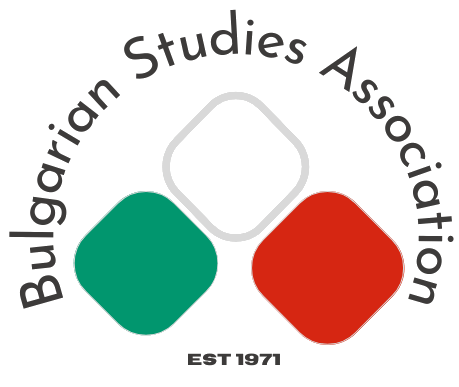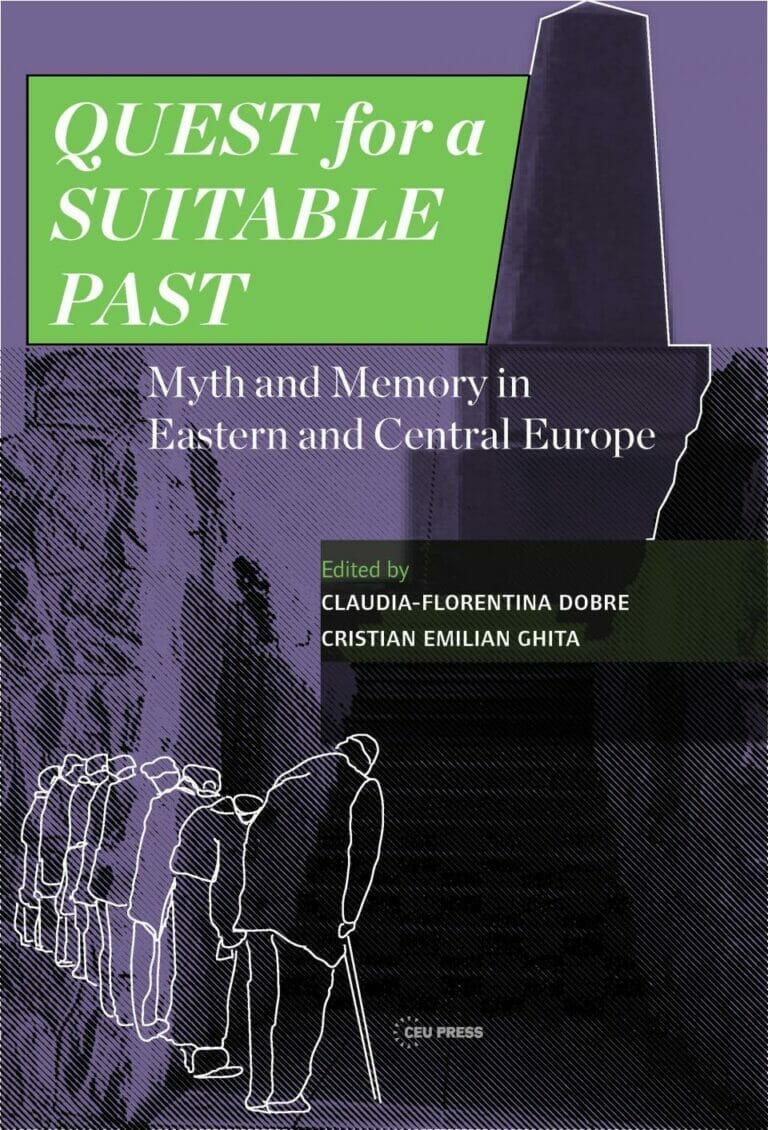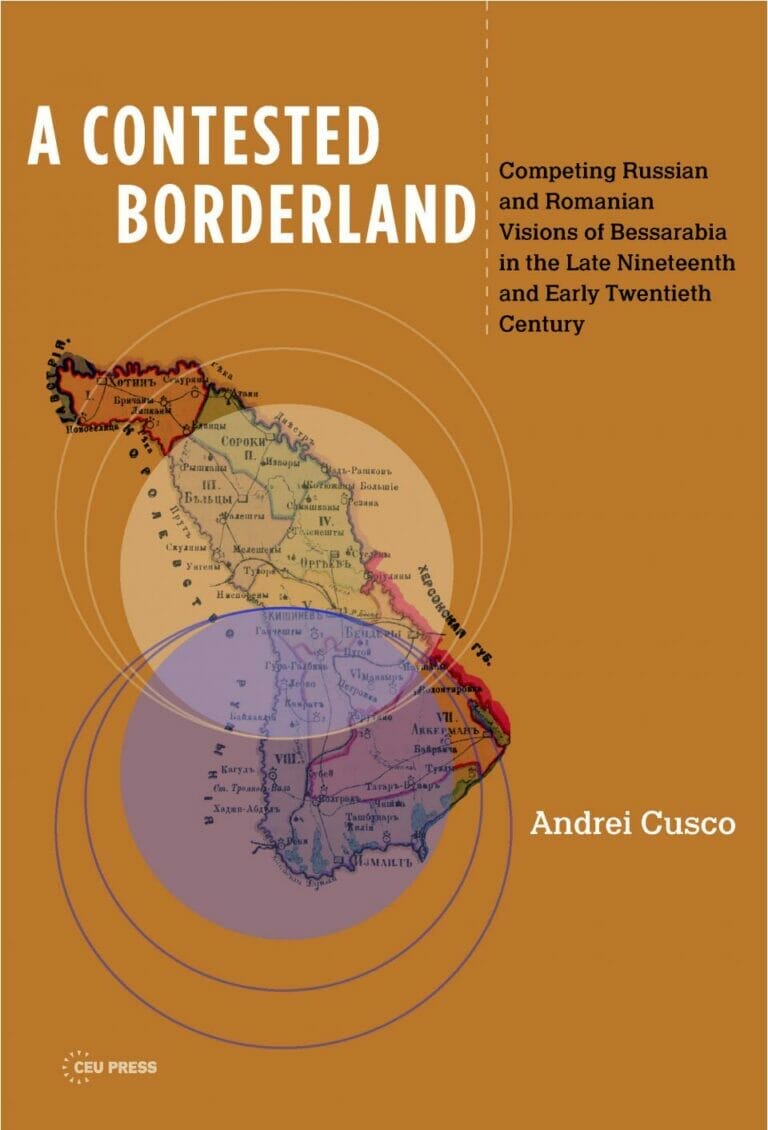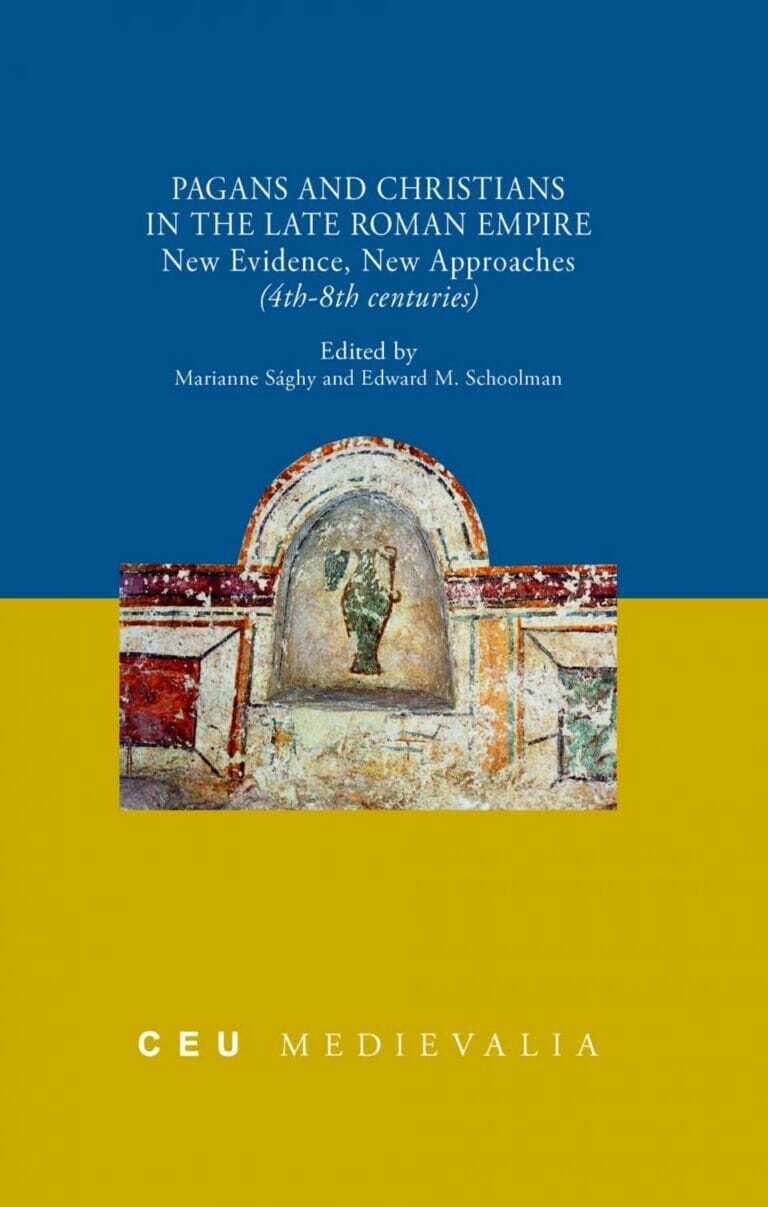Recommended books
Quest for a Suitable Past
"Parahistorical theories challenge the validity of academia, and label all works produced by academics as an attempt 'to conceal the truth about the history' of the Bulgarian people."The place of myths is discussed in the memory politics in a number of East-European countries.Since 1989, prevailing theories "challenge the thesis of the Proto-Bulgars' Turkic origin. Alongside the 'Iranian' or 'Aryan' theory, there appeared arguments favoring an autochthonous origin." As a hitback to the Soviet alliance, there is also anti-Slavism."It has been forgotten that memory is not religion ('the bones of Batak are our last stronghold against the threat of globalization')"."Historians increasingly lack the political channels and positions that could enable them to effectively oppose the new canonical narrative of communism"
"Parahistorical theories challenge the validity of academia, and label all works produced by academics as an attempt 'to conceal the truth about the history' of the Bulgarian people."
A Contested Borderland
"The image of Dobrogea evolved from the idea of a dangerous 'Trojan horse' that could subvert Romanian-Bulgarian relations in the future into a bulwark against Slavic 'expansionism'."A book on competing Russian and Romanian visions of Bessarabia."I believe that what we have to do in this situation is to submit to Europe's decision: to take Dobrogea, to rule it well, to make it truly ours, to make it one with Romania's body, to make it the heritage of our children. From the first day, let us prove to Europe that we take it for all the Romanians and that we do not intend to sell it to the Bulgarians." (Kogălniceanu)"The Bulgarian population was given considerable leverage in the educational and cultural spheres, resulting in the opening of a Bulgarian central school in Bolgrad and the burgeoning activity of the press and various cultural associations. Southern Bessarabia also became an important center for Bulgarian émigré political organizations and arguably an important recruitment pool for the future elite of the Bulgarian state after 1878."
Pagans and Christians in the Late Roman Empire
"New Bulgarian archaeological research has uncovered important new findings allowing for innovative hypotheses about the development of new religious practices. Apart from Bulgarian-language scholarship the confrontation between, and coexistence of, pagans and Christians along the Black Sea is hardly known."A collection of essays on pagan-Christian relations in the Roman Empire from the fourth to the eighth century."The first Christian communities appeared along the southwestern coast of the Black Sea in the first century as a result of the missionary preaching of the Apostles Saint Paul and Saint Andrew.""The investigation of twenty-one family tombs in Late Roman and Early Byzantine urban necropoles along the Pontic Coast revealed the gradual disappearance of pagan rites and burial practices parallel with the spread of Christianity. The fourth-century Christianization meant essentially the 'secularization' or appropriation of pagan sacred sites, without apparent instances of religious violence."
Books fully or partly on Bulgaria and Bulgarians
- The issue of land ownership during and after the dissolution of the Ottoman Empire
- A book of comparative intellectual history discusses how socialist ideology emerged as an option of political modernity in the Balkans.
- The series in the history of medicine starts with a Bulgarian monograph on social legislation and population policy in the interwar period.
- The author of the now classic Balkan Family Structure, dedicated a large volume to the analysis of the posthumous fate of Vasil Levski, of which an abridged paperback version was also published;
- How the Bulgarian Revival was instrumentalized for political purposes in the 20th century;
- An analyis of Bulgarian history writing focusing on the time span between Stambolov and Zhivkov;
- Bulgaria was also targeted by the book distribution program of the CIA since the 1950s;
- A book on anti-corruption policies by a renown Bulgarian social scientist;
- A study of the political economy of transition from command to market economy;
- A comparative review of the control of political parties over the media in Eastern Europe;
- Together with twenty-eight more post-communist transition countries, the political and economic performance of Bulgaria is also examined as part of a search of varieties of transition models.
Other CEU Press books also abound in references to Bulgarian history and culture
- The four-volume undertaking quotes and comments specimens from texts that shaped national identities in eastern Europe. Besides the “Memorandum of the Secret Central Bulgarian Committee” (1867) Bulgaria is represented by Neofit Rilski (1835), Beron (1855), Zografski (1858), Botev (1871 and 1876), Verkovich (1874), Marinov (1891), Gologanov (1891), Vazov (1894), Konstantinov (1895), Kyorchev (1907), Strashimirov (1918), Penev (1930), Mutafchiev (1931), Janev (1933), Hadzhiyski (1938), and Sheytanov (1942);
- Witches and priests in the Bulgarian village are analyzed in the series on demons and spirits;
- 19th c. textbooks and journals are scrutinized for the presentation of Bulgarian identity; the same issue is approached from 19th c. studies on “race” in another essay; and Bulgarians will read with interest the description of the paths of Macedonian supra-nationalism a hundred years ago;
- Still with regard to national identity, a study discusses common heroes and divided claims between Macedonia and Bulgaria, while in the same book an essay treats sounds and noise in socialist Bulgaria;
- The handbook of biographies contains entries on the following Bulgarians: Blagoeva, Ivanova, Karamichailova, Karavelov, Karavelova, Karima, Konova, Malinova, Zlatareva, and Zlatoustova;
- Straight Haussmannian boulevards drawn in Sofia in the frame of European town-planning;
- The book on eugenics in east and central Europe presents the subject in the interwar Bulgaria;
- Exploring the development of ethnic diversity and national tensions in the Balkans;
- In the volume on the expansion of Stalinism Bulgaria received a separate chapter next to other variants in east Europe;
- The analysis of the impact of Radio Free Europe also covers Bulgaria at detail;
- The US government kept sponsoring the émigré Bulgarian National Committee under the umbrella of the Assembly of Captive European Nations until the very end of the Cold War.
- Images of the west are being explored in Bulgarian travel writing during socialism;
- The treatment of religion under communism through the case of Vanga, a mystic prophetess;
- Artistic interactions within the Soviet bloc and with the west between 1945 and 1989;
- The Bulgarian legacy of 1968 is essentially exemplified by Zhivkov’s urging Brezhnev “the sooner troops are sent (to Czechoslovakia) the better;”
- A fresh interpretation of the contexts, meanings, and consequences of the revolutions of 1989 contains numerous references to Bulgaria;
- The seminal CEU Press title on the collapse of Soviet domination – see Bulgaria-related extracts below;
- The analysis of today’s history writing between academic standards and political agendas;
- An essay discusses the “museumizing” of the socialist past in post-1989 Bulgaria;
- The idea of the desegregation of Romani education originated in Vidin. An account on how far the process has progressed across Eastern Europe;
- A rich panoply of remembrances of the communist era, and attempts to handle traumatic pasts, and recent developments in post-communist memory politics;
- The six-country comparative sociological research includes Bulgarian village studies of post-communist rural transformation;
- “The Bulgarians don’t object if they disagree, especially if they disagree with the authority”-on how East-European mindset adapts to capitalism;
- Measures to protect Bulgarian children from the adverse effects of television is the last item to mention.
Bibliographic data in order of occurrence above
Some of the older titles are out of print nevertheless bookshops or online distributors may get you print-on-demand copies, and all CEU Press titles are sold in digital version at the major electronic distributors.
Quest for a Suitable Past – Myths and memory in Central and Eastern Europe, Dobre / Ghita, 164 pages, 2017, 978-963-386-136-3 cloth
A Contested Borderland – Competing Russian and Romanian visions of Bessarabia in the second half of the 19th and early 20th century, Cusco, A.,348 pages, 2017, 978-963-386-159-2 cloth
Pagans and Christians in the Late Roman Empire – New evidence, new approaches (4th-8th centuries) Sághy / Schoolman,382 pages, 2017, 978-963-386-255-1 paperback
Muslim Land, Christian Labor – Transforming Ottoman imperial subjects into Bulgarian national citizens, 1878-1939, Mirkova, A.M., 250 pages, 2017, 978-963-386-161-5 cloth
Discourses of Collective Identity in Central and Southeast Europe 1770-1945
Vol. I. Late Enlightenment – Emergence of the modern ‘national idea’, Trencsényi / Kopecek, 362 pages, 2006, 978-963-7326-52-3 cloth
Vol. II. National Romanticism – Formation of national movements, Trencsényi / Kopecek, 508 pages, 2007, 978-963-7326-60-8 cloth
Vol. III/1. Modernism – The creation of nation-states, Ersoy / Górny / Kechriotis, 496 pages, 2010, 978-963-7326-61-5 cloth
Vol. III/2. Modernism – Representations of national culture, Ersoy / Górny / Kechriotis, 398 pages, 2010, 978-963-7326-64-6 cloth
Vol. IV. Anti-Modernism – Radical revisions of collective identity, Mishkova / Turda / Trencsényi, 452 pages, 2014, 978-963-7326-62-2 cloth
Entangled Paths Towards Modernity – Contextualizing socialism and nationalism in the Balkans, Dimou, A., 450 pages, 2009, 978-963-9776-38-8 cloth
Demography and Nation – Social legislation and population policy in Bulgaria, 1918-1944, Baloutzova, 250 pages, 2010, 978-963-9776-66-1 cloth
Balkan Family Structure and the European Pattern – Demographic developments in Ottoman Bulgaria, Todorova, M., 264 pages, 2006, 978-963-7326-45-5 cloth
Bones of Contention – The living archive of Vasil Levski and the making of Bulgaria’s national hero, Todorova, M., 622 pages + 16 pages illustrations, 2009, 978-963-9776-24-1 cloth; 978-615-5053-09-2 paperback 370 pages (ca. 40 illustrations, abridged version of the cloth edition)
The Making of a Nation in the Balkans – Historiography of the Bulgarian Revival, Daskalov, R., 296 pages, 2004, ISBN 978-963-9241-83-1 cloth
Debating the Past – Modern Bulgarian history from Stambolov to Zhivkov, Daskalov, R., 376 pages, 2011, 978-615-5053-00-9 cloth
Hot Books in the Cold War – The CIA-funded secret western book distribution program behind the Iron Curtain, Reisch, A., 570 pages, 2013, 978-615-5225-23-9 cloth
Shifting Obsessions – Three essays on the politics of anti-corruption, Krastev, I., 136 pages, 2004, 210mm x 120 mm (8.2″ x 4.69″) 978-963-9241-94-7 paperback
Accidental Occidental – Economics and culture of transition in Mitteleuropa, the Baltic and the Balkan area, Bokros, L., 204 pages, 978-615-5225-24-6 cloth
Party Colonisation of the Media in Central and Eastern Europe, Bajomi-Lázár, P., 290 pages, 2014, 978-963-386-041-0, cloth
On Baltic Slovenia and Adriatic Lithuania – A qualitative comparative analysis of patterns in post-communist transformation, Norkus, Z., 375 pages, 16 illustrations (charts, photo etc.), 2012, 978-615-5053-50-4 cloth
Discourses of Collective Identity in Central and Southeast Europe 1770-1945 – Texts and commentaries, Trencsényi et al. eds. Volumes I-IV, 2006-2014,
Witchcraft Mythologies and Persecutions – Demons, Spirits, Witches – Volume 3, Pócs / Klaniczay, 360 pages, 2008, 978-963-7326-87-5 cloth
We, the People – Politics of national peculiarity in Southeastern Europe, Mishkova, D., 392 pages, 2009, 978-963-9776-28-9 cloth
Ideologies and National Identities – The case of twentieth-century southeastern Europe, Lampe / Mazower, 320 pages, 2003, 978-963-9241-72-5 cloth; 978-963-9241-82-4 paperback
Biographical Dictionary of Women’s Movements and Feminisms, A – Central, Eastern, and South Eastern Europe, 19th and 20th centuries, De Haan / Daskalova / Loutfi, 700 pages, 2006, 978-963-7326-39-4 cloth
Races to Modernity – Metropolitan aspirations in Eastern Europe 1890-1940, Behrends / Kohlrausch, 380 pages, 2014, 978-963-386-035-9 cloth
Blood and Homeland – Eugenics and racial nationalism in central and southeast Europe, 1900-1940, Turda / Weindling, 478 pages, 2007, 978-963-7326-77-6 cloth; 978-963-7326-81-3 paperback
Beyond Mosque, Church, and State – Alternative narratives of the nation in the Balkans, Dragostinova / Hashamova, 332 pages, 2016, 978-963-386-133-2 cloth
Stalinism Revisited – The establishment of communist regimes in East-Central Europe,
Tismaneanu V.452 pages, 2009, 978-963-9776-55-5 cloth; 978-963-9776-63-0 paperback
Cold War Broadcasting – Impact on the Soviet Union and Eastern Europe, Johnson / Parta, 610 pages, 2010, 978-963-9776-80-7 cloth
The Inauguration of Organized Political Warfare – The Cold War organizations sponsored by the National Committee for a Free Europe / Free Europe Committee, Kádár Lynn, K., 610 pages, 2013, 978-0-9859433-0-1 cloth
Under Eastern Eyes – A comparative introduction to East European travel writing on Europe, East Looks West – Volume 2, Bracewell / Drace-Francis, 400 pages, 2008, 978-963-9776-11-1 cloth
Art beyond Borders – Artistic exchange in communist Europe (1945-1989), Bazin / Glatigny / Piotrowski, 520 pages, 2016, 978-963-386-083-0 cloth
Christianity and Modernity in Eastern Europe, Berglund / Porter-Szucs, 402 pages, 2010, 978-963-9776-65-4 cloth
Promises of 1968 – Crisis, illusion, and utopia, Tismaneanu, V., 460 pages, 2011, 978-615-5053-04-7 cloth
The End and the Beginning – The revolutions of 1989 and the resurgence of history, Tismaneanu / Iacob, 520 pages, 2012, 978-615-5053-65-8 cloth
Masterpieces of History – The peaceful end of the cold war in Europe, 1989 – National Security Archive Cold War Reader, Savranskaya / Blanton / Zubok, 782 pages, 2010, 978-963-9776-77-7 cloth ; 978-615-5053-40-5 paperback
Narratives Unbound – Historical studies in post-Communist Eastern Europe, Antohi / Apor / Trencsényi, 514 pages, 2007, 978-963-7326-85-1 cloth
Past for the Eyes – East European representations of Communism in cinema and museums after 1989, Sarkisova / Apor, 436 pages, 30 photos, 2008, 978-963-9776-03-6 cloth
Ten Years After – A history of Roma school desegregation in Central and Eastern Europe, Rostas, J., 392 pages, 2012, ISBN 978-615-5053-13-9, cloth
Remembering Communism – Private and public recollections of lived experience in Southeast Europe, Todorova / Dimou / Troebst, 640 pages, 2014, 978-96 3-386-034-2 cloth
Remembrance, History, and Justice – Coming to terms with traumatic pasts in democratic societies, Tismaneanu / Iacob, 516 pages, 2015, 978-963-386-092-2 cloth
Of Red Dragons and Evil Spirits – Post-communist historiography between democratization and new politics of history, Luthar, O., 256 pages, 2017, 978-963-386-151-6 cloth
Green Barons, Force-of-Circumstance Entrepreneurs, Impotent Mayors – Rural change in the early years of post-socialist capitalist democracy, Swain, N., 2013, 412 pages, 978-615-5225-70-3 cloth
Capitalism from Outside? – Economic cultures in Eastern Europe after 1989, Zentai / Kovács, 360 pages, 2012,978-615-5211-33-1 cloth
Media Freedom and Pluralism – Media policy challenges in the enlarged Europe, Klimkiewicz, B., 362 pages, 2010, 978-963-9776-73-9 cloth



